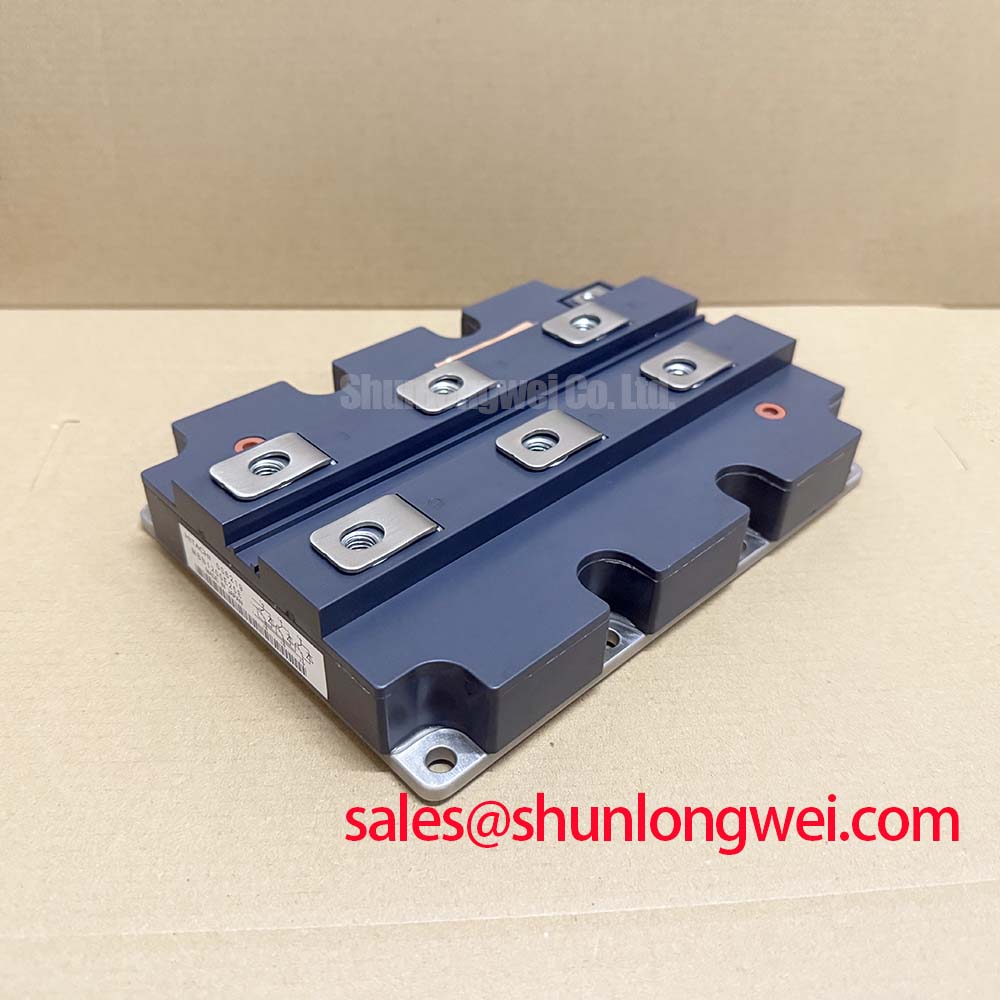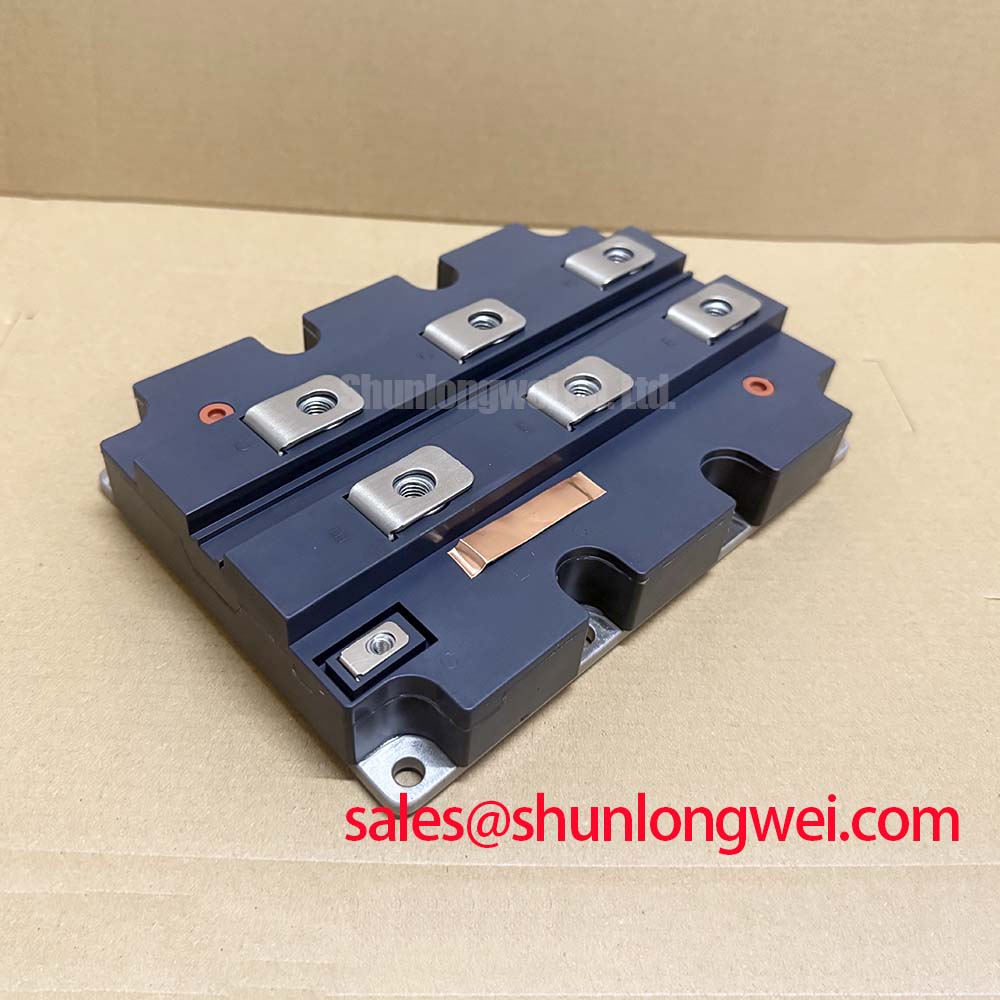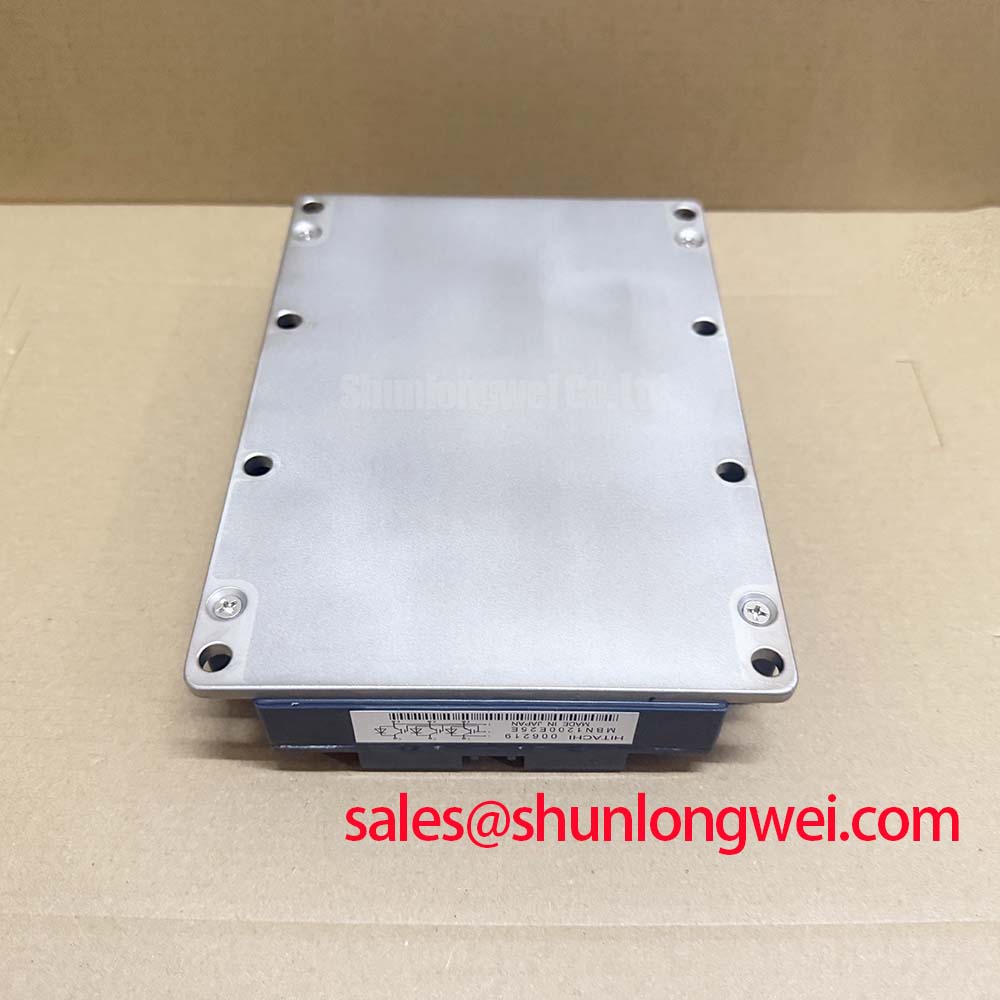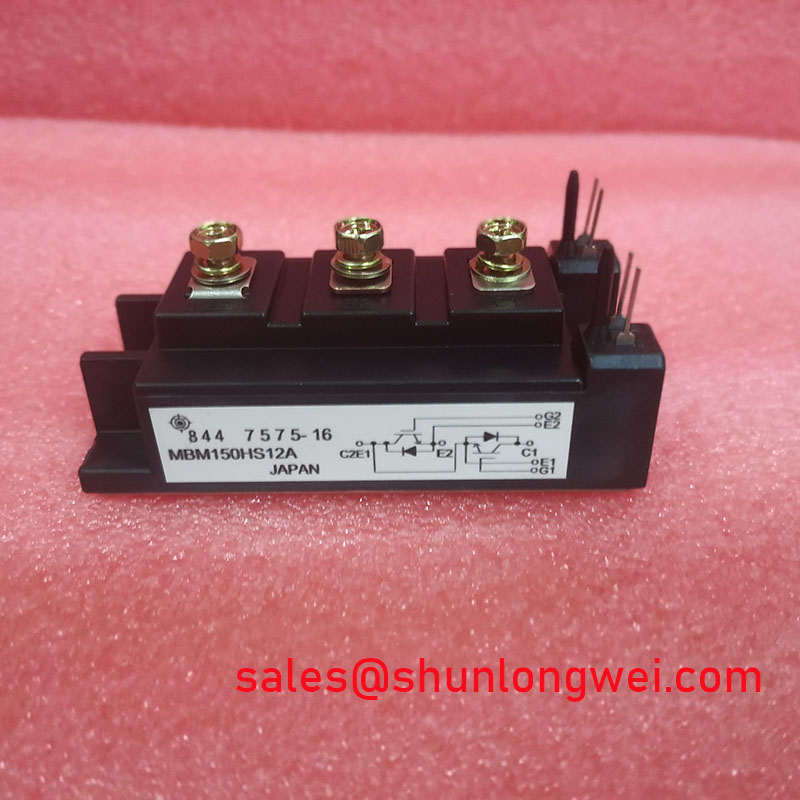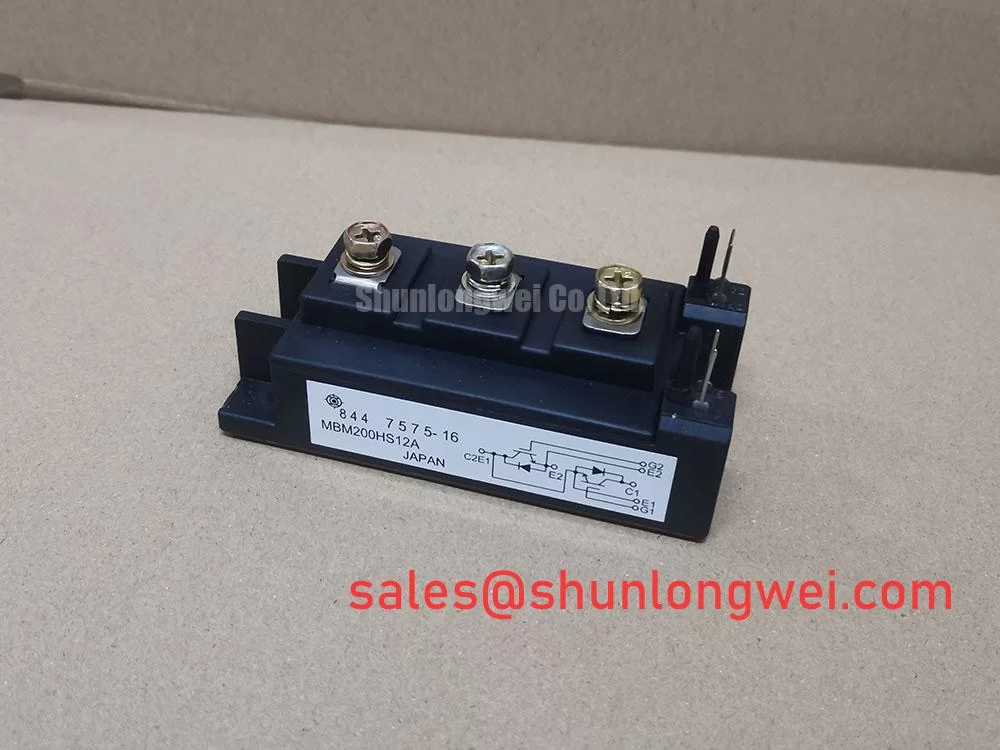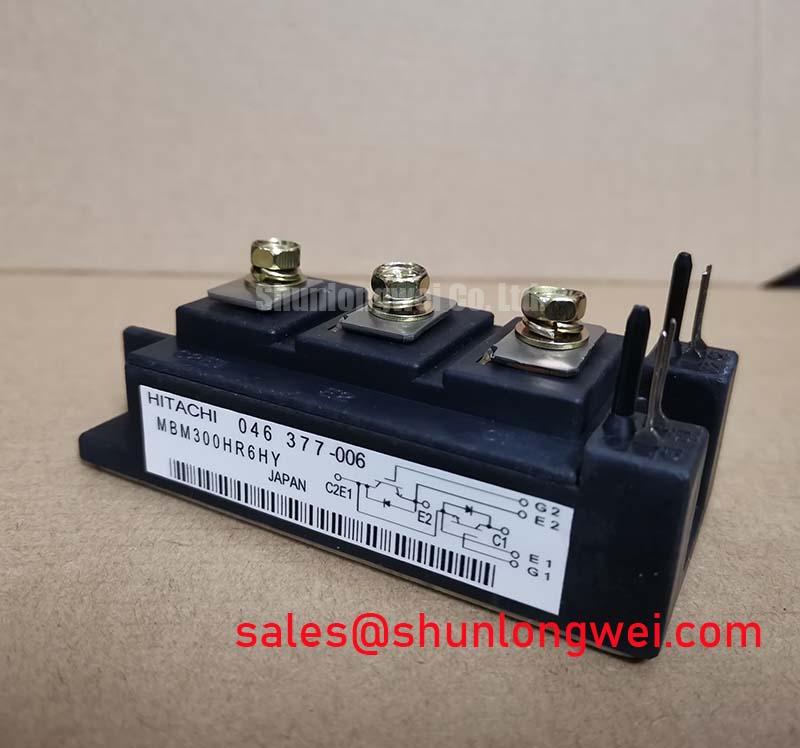Content last revised on November 16, 2025
Hitachi MBN1200E25E: High-Current 2500V IGBT Module
Technical Deep Dive into the MBN1200E25E IGBT Module
The Hitachi MBN1200E25E is an IGBT module engineered for high-power conversion systems where thermal stability and electrical robustness are primary design considerations. This component delivers exceptional performance through its high-voltage and high-current ratings, making it a cornerstone for demanding industrial applications. Central to its design is the ability to manage significant power loads while maintaining operational integrity. What is the key to the MBN1200E25E's reliability? Its exceptionally low thermal resistance ensures efficient heat dissipation from the semiconductor junction to the heatsink. This intrinsic quality is crucial for extending the module's service life and ensuring predictable performance under strenuous, continuous operating conditions, thereby reducing the total cost of ownership for the end system.
Data-Driven Selection: MBN1200E25E Thermal Benchmarks
Evaluating power modules requires a focus on performance under application-specific stress. The MBN1200E25E provides a clear data profile for engineers assessing its fit for high-reliability systems. Below is a comparison of key parameters that directly influence thermal performance and electrical headroom. This data is presented to empower your design and validation process, allowing for an informed comparison based on verifiable specifications from the component's datasheet.
A direct comparison with alternative modules often reveals differences in thermal impedance and power dissipation capabilities. For systems operating near the upper limits of their current rating, a lower junction-to-case thermal resistance, like that found in the MBN1200E25E, translates directly to lower junction temperatures. This can be the deciding factor in achieving system reliability targets. For designs that require robust overcurrent handling, components like the CM600DX-24T offer different voltage and current profiles that may be suitable for comparison during the early stages of system architecture design.
The Strategic Value of Thermal Stability in Power Conversion
In the landscape of industrial power electronics, the trend towards higher power density and increased system uptime places immense pressure on component-level thermal management. The ability of a module like the MBN1200E25E to efficiently evacuate heat is not merely a performance metric; it is a strategic advantage. Systems built with thermally efficient components can operate closer to their theoretical maximum output, require less complex and costly cooling solutions, and exhibit a significantly lower rate of thermally induced failures. This directly supports macro trends such as energy efficiency mandates and the push for more compact, powerful inverter and converter designs. Effective thermal management is the foundation upon which long-term operational reliability is built, ensuring that capital equipment delivers its expected return on investment.
Field Evidence: Sustaining Performance Under Demanding Loads
While datasheet specifications provide a baseline, the real-world performance of a power module is proven in the field. The MBN1200E25E is designed for environments where consistent, high-current delivery is the norm. Consider a large-scale industrial motor drive operating continuously under heavy load. In such a scenario, the module's ability to handle a continuous collector current of 1200A while efficiently managing the resulting 5200W of power dissipation is critical. This prevents the junction temperature from exceeding its maximum limit, a common failure point in lesser components. This sustained performance capability ensures that processes from manufacturing lines to public transit systems operate without unexpected interruptions, safeguarding both productivity and safety.
Core Applications: Where Thermal Endurance is Paramount
The specific electrical and thermal characteristics of the Hitachi MBN1200E25E make it particularly well-suited for a range of high-power applications where performance cannot be compromised. Its high voltage and current ratings are fundamental to its utility in these demanding sectors.
- High-Power Industrial Motor Drives: In systems such as rolling mills, large-scale pumps, and compressors, the module's ability to control massive amounts of power with precision is essential for process control and efficiency.
- Renewable Energy Inverters: For utility-scale solar and wind power conversion, the MBN1200E25E provides the necessary robustness to handle fluctuating power generation and feed it reliably into the grid.
- Traction and Propulsion Systems: The module's capacity for high-current handling makes it a candidate for the main inverters in railway and other heavy electric vehicle applications, where acceleration and braking cycles create significant electrical stress.
- Uninterruptible Power Supplies (UPS): In data centers and critical industrial facilities, the module ensures a stable and reliable power backup, with its thermal efficiency contributing to the overall system's longevity and reduced cooling requirements.
For high-power motor drives requiring sustained 1200A operation, the MBN1200E25E's 5200W power dissipation makes it a thermally superior selection.
Dissecting Thermal Performance: The Engineering Behind the Specs
A deeper analysis of the MBN1200E25E's datasheet reveals the engineering priorities behind its design. Three parameters, in particular, underscore its focus on thermal reliability and robust operation.
- Collector-Emitter Voltage (Vces): At 2500V, this rating provides substantial design margin for systems operating on high-voltage DC buses, such as those found in multi-megawatt inverters. It ensures the device can safely withstand voltage transients, a crucial aspect of system protection and reliability.
- Thermal Resistance (Rth(j-c)): The IGBT's thermal resistance is specified at a low 0.021 °C/W. This value can be thought of as the width of a pipeline for heat; a wider pipe (lower resistance) allows more heat to flow away from the sensitive semiconductor junction for a given temperature difference. This exceptional efficiency in heat transfer is fundamental to keeping the device within its Safe Operating Area (SOA) during high-load conditions.
- Total Power Dissipation (Pc): Rated at 5200 Watts, this figure represents the module's capacity to shed heat. How does high power dissipation benefit a system? It enables sustained operation at high currents without thermal stress, providing a buffer that enhances the overall system's durability and long-term performance. Understanding how to manage this is key, a topic further explored in our guide to decoding IGBT datasheets.
MBN1200E25E at a Glance: Key Performance Indicators
For engineers requiring a quick assessment, the following table highlights the core specifications of the MBN1200E25E, focusing on the metrics most relevant to high-power, thermally demanding applications.
| Parameter | Value |
|---|---|
| Collector-Emitter Voltage (Vces) | 2500 V |
| Continuous Collector Current (Ic) at Tc=25°C | 1200 A |
| Total Power Dissipation (Pc) | 5200 W |
| Collector-Emitter Saturation Voltage (VCE(sat)) Typ. at Ic=1200A | 3.2 V |
| Thermal Resistance, Junction to Case (Rth(j-c)) per IGBT | 0.021 °C/W |
| Isolation Voltage (Viso) | 2500 V (AC, 1 minute) |
Note: The parameters listed are for reference and are subject to the conditions specified in the official datasheet. Engineers should consult the complete datasheet for comprehensive design information.
Technical Inquiries on the MBN1200E25E
What is the primary implication of the 2500V Vces rating for system design?
A 2500V Vces rating provides significant voltage headroom, making the MBN1200E25E suitable for applications with high DC bus voltages, such as those derived from 1000V to 1500V renewable energy sources or medium-voltage industrial drives. This high breakdown voltage enhances system resilience against voltage spikes and transients, which is a critical reliability factor in electrically noisy industrial environments.
How does the low thermal resistance (Rth(j-c)) of 0.021 °C/W impact heatsink selection and system size?
A low thermal resistance simplifies thermal design. It means that for every watt of power dissipated, the temperature rise from the case to the junction is minimal. This allows engineers to either use a smaller, more cost-effective heatsink to achieve a target junction temperature or to push more power through the module while staying within thermal limits. This ultimately enables higher power density and potentially smaller, lighter end-systems.
Given the 1200A current rating, what are the key gate drive considerations for the MBN1200E25E?
Driving a high-current module like the MBN1200E25E requires a robust gate driver circuit capable of supplying sufficient peak current to quickly charge and discharge the IGBT's input capacitance. This ensures fast, clean switching and minimizes switching losses. Key considerations include minimizing inductance in the gate drive loop, providing a stable positive and negative gate voltage (e.g., +15V/-15V) to ensure full enhancement and prevent parasitic turn-on, and potentially implementing a Kelvin emitter connection for improved switching accuracy.
Future-Proofing High-Power Systems
As industrial and renewable energy systems continue to evolve towards higher power levels and greater efficiency, the foundational components must offer a clear path for scalability and reliability. The Hitachi MBN1200E25E IGBT Module, with its emphasis on superior thermal characteristics and robust electrical ratings, represents a strategic choice for developing next-generation power conversion platforms. Its design facilitates the creation of systems that are not only powerful but also built for longevity, ensuring that today's engineering decisions will meet the operational demands of tomorrow.


